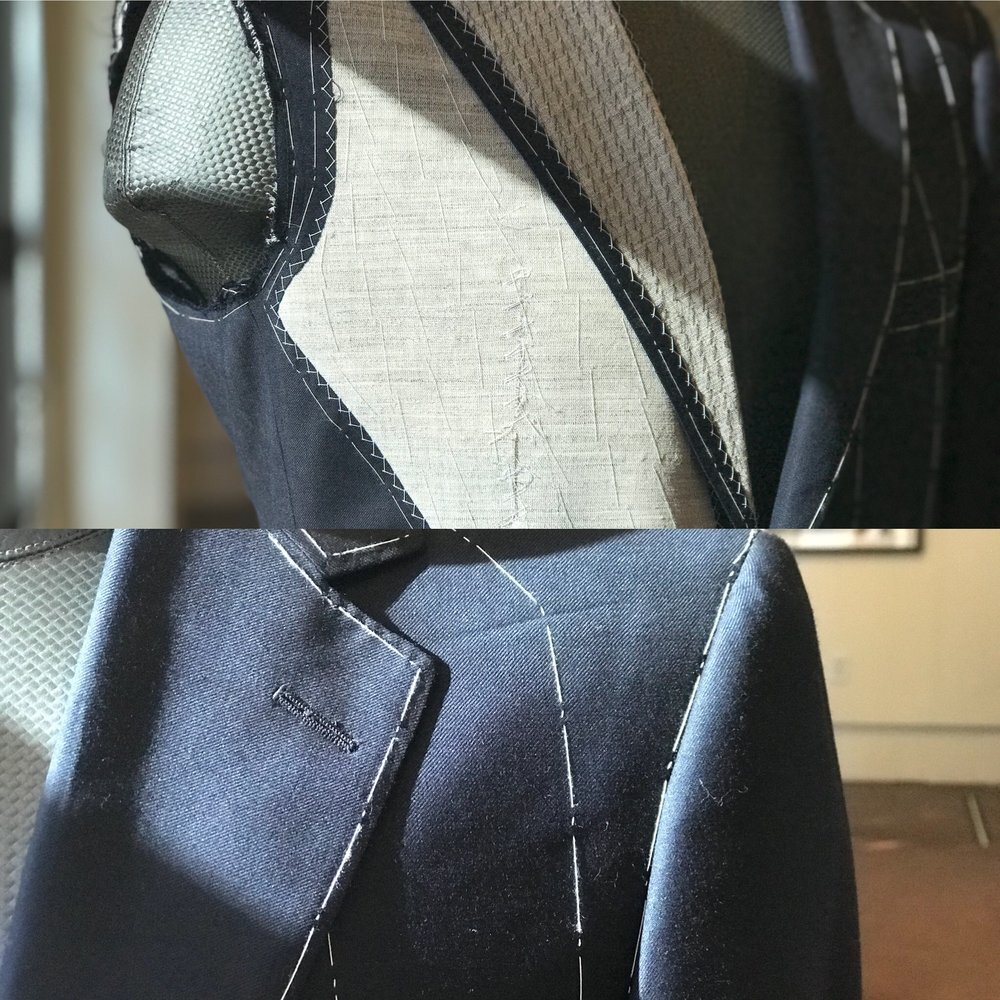Tailored Suits Perth: Elevate Your Style with Custom Suits
Tailored Suits Perth: Elevate Your Style with Custom Suits
Blog Article
Comprehending the Tailoring Process: From Fabric Option to Final Suitable for the Perfect Closet
The customizing process is a complex interplay of art and science, starting with the essential choice of fabric selection and culminating in the exact changes of last installations. Each textile type brings unique high qualities that affect not only the aesthetic appeal yet likewise the garment's long life and suitability for various events. Understanding the nuances of customizing strategies can boost one's wardrobe to unmatched levels of elegance. As we check out these elements even more, one should think about how even the tiniest details can dramatically impact the total outcome of one's individual design.
Value of Fabric Option
Selecting the ideal fabric is vital in the tailoring procedure, as it straight affects the comfort, durability, and total visual of the final garment. The selection of material establishes the structure for the garment's performance, capability, and design. Various fabrics possess unique residential or commercial properties, such as breathability, stretch, and weight, which can significantly impact exactly how the garment drapes and fits the body.

A customized item made from a proper fabric not only showcases craftsmanship yet likewise elevates the wearer's confidence. Subsequently, understanding the subtleties of textile choice is paramount for any kind of tailoring venture. It makes sure that the final item not only satisfies the visual desires of the client but likewise lines up with functional demands, consequently accomplishing an unified equilibrium between kind and feature in the customized closet.
Kinds Of Fabrics and Their Uses
Understanding the various kinds of fabrics offered is important for making educated choices throughout the customizing procedure. Each textile has special attributes that determine its suitability for details garments and occasions.
Its versatility permits it to be tailored right into every little thing from shirts to gowns. Its all-natural elasticity assists garments maintain form over time.
Silk exudes high-end and is light-weight, making it excellent for eveningwear and fragile blouses; nonetheless, it calls for careful handling because of its fragility. Bed linen, with its distinctive coating, is a prominent option for cozy environments, giving a crisp and ventilated feeling, yet it wrinkles conveniently, which might affect the garment's appearance.
Artificial textiles, such as polyester and nylon, offer toughness and resistance to creases, making them appropriate for daily wear and active clothes. Understanding these material types and their properties enables for much better decision-making, ensuring that each tailored item not just fits well however likewise aligns with the intended objective and celebration.
The Tailoring Strategies Described
The art of customizing counts on a selection of methods that change textile into well-fitted garments. Central to this process is pattern drafting, where a dressmaker produces templates based straight from the source upon the customer's measurements and preferred design. This preliminary action makes sure that the garment will fit the wearer effectively prior to any cutting takes place.
When patterns are developed, cutting methods enter into play. Precision is critical as errors can result in misfitting garments. Tailors frequently use different cutting approaches, such as single-layer cutting for detailed designs and multiple-layer reducing for effectiveness on typical patterns.
Basting is an additional crucial method, permitting tailors to temporarily stitch material assemble for a preliminary fitting (top tailor perth). This approach uses the chance to evaluate the drape and total silhouette before final stitching
Seaming methods, including flat-felled seams and French joints, enhance the garment's durability and visual appeal. Tailors blog additionally use strategies such as interfacing and cushioning to offer framework and shape to specific locations, like collars and shoulders.
Finally, finishing methods, including hemming and edge finishing, guarantee the garment's durability while supplying a polished appearance. With each other, these techniques develop the foundation of effective customizing, leading to elegant, tailor-made garments.

Fitting Modifications and Factors To Consider
After the first customizing techniques have been used and the garment is created, fitting adjustments become extremely important to attaining the perfect fit. These modifications attend to different facets of the garment, ensuring it contours to the user's physique and improves total look.

The surge of pants is an additional vital element; it should rest easily above the hips over here without triggering discomfort, enabling ease of activity. Hemming lengths for both pants and skirts should reflect the wearer's favored design while appreciating percentages.
Moreover, focus must be offered to the back of the garment, guaranteeing that there are no unattractive pulls or excess fabric - top tailor perth. Each change needs to be diligently considered, as even minor modifications can significantly affect the general fit and visual of the customized piece, ultimately causing a wardrobe that shows confidence and elegance
Keeping Your Tailored Wardrobe
Correct upkeep of customized garments is vital to maintaining their fit and appearance in time. To ensure long life, normal cleansing is critical. Always adhere to the treatment label guidelines, which might suggest dry cleaning for fragile fabrics or machine cleaning for even more resilient materials. Avoid constant laundering, as this can use down the material and change the garment's shape.
Storage is similarly essential; use cushioned wall mounts for jackets and coats to preserve shoulder structure, and store trousers folded up neatly or hung to avoid creasing. Safeguard garments from straight sunshine, which can discolor shades and damage fibers.
In addition, periodic examinations for small repair services can stop bigger concerns. Look for loose buttons, tearing seams, or indicators of moth damage, addressing these issues quickly to preserve the garment's integrity.
Lastly, think about seasonal turning. Using tailored items in small amounts allows materials to recover, prolonging their life-span. By carrying out these maintenance techniques, you can guarantee that your customized garments remain as beautiful as the day you initially wore them, enhancing your perfect closet for years to find.
Verdict
The tailoring procedure, encompassing material selection, skilled techniques, and exact fitting changes, plays an important function in developing garments that enhance both comfort and design. Comprehending the relevance of upkeep expands the life of tailored garments, strengthening their value in a well-curated wardrobe.
Report this page